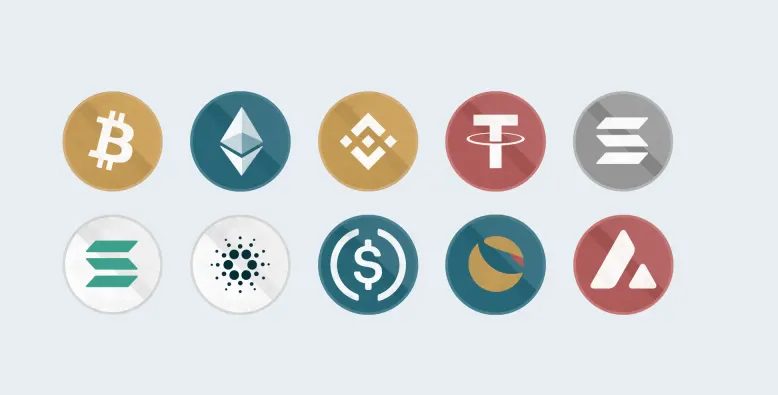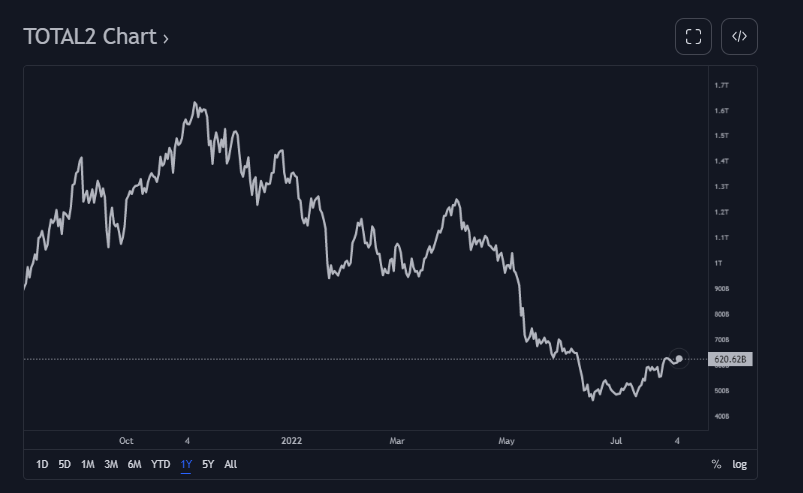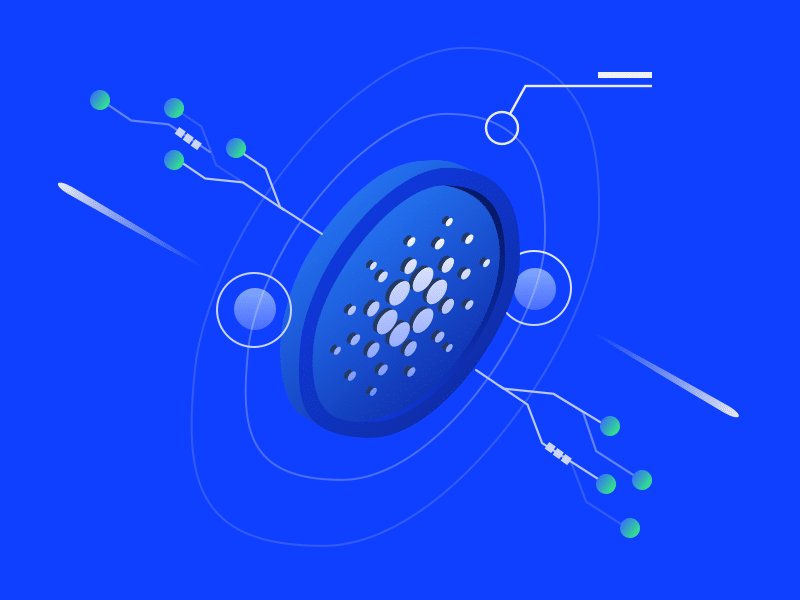What is an Altcoin?
The cryptocurrency industry has grown rapidly since Bitcoin became popular in 2013. Data from CoinMarketCap, currently, there are more than 10,000 active crypto assets worldwide. As the first crypto asset, Bitcoin is still the most expensive cryptocurrency and has the largest market capitalization. Not only that, the difference between Bitcoin and other crypto assets is huge. This gave birth to the altcoin term. An altcoin is a term to distinguish between Bitcoin and other crypto assets. This article will explain what an altcoin is, its types, and some examples.
Article Summary
- 🪙 An altcoin is a term that refers to all cryptocurrencies other than Bitcoin. It is an abbreviation of the words alternative and coin which is also commonly shortened to “alt.”
- 💵 Altcoins are crypto projects with different functions, roles, and value propositions. With around 10,000 active crypto assets, the altcoin market cap has a value of 606 billion US dollars (August 4, 2022).
- ⚖️ The main difference between altcoins and Bitcoin is their function and role in the crypto market. Altcoins are divided into many categories such as stablecoin, smart contract platforms, Layer-2, and DeFi.
- 🧠 Investing in altcoins carries a higher risk than Bitcoin because the price moves faster and more dramatically. Therefore, you need to carefully research each altcoin before buying.
Definition of Altcoins
Altcoin is a term that refers to all cryptocurrencies other than Bitcoin. An Altcoin itself is an abbreviation of the word alternative and coin that is also called “alt.” While Bitcoin is often thought of as digital gold that stores value, altcoins are crypto projects with different functions, roles, and value propositions. With around 10,000 coins currently active, the altcoin market cap has a value of 606 billion US dollars (August 4, 2022).
Born as an alternative to Bitcoin, altcoins have had a huge influence on the development of the crypto industry. The altcoin with the largest market cap right now is Ethereum. Launched in 2015, Ethereum started the highly competitive smart contract platform industry, became the birthplace of DeFi, and spawned thousands of new altcoins.
Altcoins themselves have an important role in the dynamics of the crypto asset market. In a bull market, there is the term altcoin season or altseason. This term refers to a period of time where the majority of altcoins experience a drastic price increase, following Bitcoin. You can use the Altcoin Season Index to find out when we enter the altseason.
Read more: What is altcoin season?
Difference between Altcoin and Bitcoin
The main difference between altcoin and Bitcoin is their function and role in the crypto market. Bitcoin has two main functions: as a medium for the transfer of wealth similar to fiat money and as “digital gold” with an increasing value. Meanwhile, altcoins fill Bitcoin’s weaknesses and have different types of functions. Altcoins like ETH act as transaction fees in a variety of applications while stablecoins like USDT and USDC protect the value of assets in a bear market.
Disadvantages of Choosing Altcoins
- 📉 Price Fluctuation: The price of altcoins fluctuates more often than Bitcoin due to the smaller altcoin market. Altcoin corrections are usually deeper than Bitcoin. In fact, in the bear market phase, altcoins can experience a decline of 90% from their all-time high (ATH).
- ❓ Too Many Choices: There are thousands of altcoins in the crypto asset market. However, projects with long-term potential and strong user communities can be counted on the fingers. You need to be careful in choosing an altcoin project.
- ⚠️ High Risk: Investing in altcoin naturally comes with a higher risk than Bitcoin. As history shows, many altcoins can gain popularity quickly but “died” a few years later.
Advantages of Choosing Altcoins
- 📈 Significant increase: Altcoin has more potential to the upside. Most Altcoins tend to experience more drastic price increases than Bitcoin.
- 🔧 Utility besides as an asset: The majority of altcoin assets have additional functions, not only as investment assets. For example, ETH is a currency to pay for transaction fees and interact with crypto applications and APE tokens represent votes for ApeCoin ecosystem policies.
- 🤑 Potential profit: A large number of altcoin projects also provide huge profit potential. You might find an altcoin project that explodes because it solves a fundamental problem in the crypto market. You just need to research what fundamental value a crypto project provides.
Altcoin Category

Stablecoin
Stablecoin is one of the most popular altcoins whose value is pegged to fiat currencies (dollars, rupiah, etc.). It is a cryptocurrency with a stable value. Stablecoins also function as off-ramp and on-ramp assets in the crypto world. So, it is the gateway for investors who want to enter the crypto world.
Stablecoins are divided into two types based on how they are backed, by fiat or crypto. Some examples of stablecoins guaranteed by fiat are USDT, IDRT, and BUSD. Meanwhile, stablecoins guaranteed by crypto assets are DAI, USDD, and UST.
Stablecoins have the advantages of crypto assets and fiat currencies: the transaction process is fast, safe, and has a stable value.
Read more: What is Stablecoin?
Smart Contract Platform
The smart contract platform (also commonly called layer-1) is a term for altcoins that can create their own application ecosystem. Every crypto in this category has an ecosystem of other crypto assets and decentralized applications (DApps) on top of it. Some examples of altcoins in this category are Ethereum and Avalanche . Both have their own ecosystem of applications, protocols, and cryptocurrencies.
The smart contract platform is the reason for the birth of many innovations in the cryptocurrency world. Currently, there is fierce competition among various altcoins in this category and each has its own advantages and disadvantages.
Layer-2
Layer-2 altcoins are crypto designed as a scalability solution for other blockchain networks. All layer-2 crypto assets are built on top of the “parent” blockchain. Its purpose is to enhance the transaction capabilities of its parent blockchain by offering lower transaction speed and fees. The layer-2 industry was originally created because Ethereum always has network congestion issues. Some of the assets in this category are Polygon (MATIC), Optimism, (OP), and Immutable X .
DeFi
Decentralized Finance (DeFi) is a decentralized financial services industry in the crypto world. Altcoins in this industry usually function as a governance token in a DeFi application. This industry has grown rapidly since Ethereum introduced smart contract technology which paved the way for many developers to create crypto-based financial applications. Examples of DeFi altcoins are UniSwap , Curve Finance , and dYdX (DYDX).
Financial services in DeFi are decentralized exchange (DEX), yield aggregator, lending and borrowing, crypto insurance, derivative, etc.
Read more: What is Decentralized Finance (DeFi)?
Choosing Altcoins

Choosing an altcoin for investment can be very confusing. There are thousands of altcoins with different functions and roles. However, only a few altcoins have an active app ecosystem, strong community, and a sizable user base. There is no one altcoin that can be called the best altcoin because all of them have different advantages and disadvantages.
Then, how to choose an altcoin? You can pay attention to a few things below:
- 💻 Technology: Each altcoin offers different technologies with specific specializations. For Example, Solana has always prided itself on its transaction speed, Ethereum has the most decentralized network, and Fantom offers low fees.
- 👤 Community and User Base: One of the important indicators for an altcoin project is an active user base and community. In fact, this is arguably the best indicator when judging an altcoin project.
- ⚖️ Tokenomics: Tokenomics or token economy deals with the circulation of a crypto asset and its maximum supply amount. The first principle regarding this is to look for altcoins whose token distribution is community-oriented and not to the big investors behind it. Apart from that, another good indicator is that the majority of the tokens are already circulating in the market with a tight vesting schedule.
- 🧰 Usability: This criterion refers to the function of an altcoin in two ways, the function of the asset and the function of the platform. For example, ETH as a coin acts as a currency for transaction fees so that it will continue to be used and Ethereum has a function as an application platform. Look for altcoins with a clear purpose that can drive demand from their users.
Read more: Understanding Fundamental Analysis
Investing in Altcoin
You can start investing in altcoins in the Pintu app. Through Pintu, you can check altcoin price and buy the best altcoins such as AVAX, ETH, SOL, and other cryptocurrencies.
Pintu is also compatible with popular wallets such as Metamask to facilitate your transactions. Download the Pintu app on Play Store and App Store! Your security is guaranteed because Pintu is regulated and supervised by Bappebti and Kominfo.
You can learn more about cryptocurrencies through the various Pintu Academy articles that we update every week! All Pintu Academy articles are made for educational purposes only, not financial advice.
References
- What are altcoins?, Bitpanda, accessed on 26 July 2022.
- Eric Rosenberg, What Are Altcoins?, The Balance, accessed on 26 July 2022.
- What is an altcoin? A beginner’s guide to cryptocurrencies beyond Bitcoin, Coin Telegraph, accessed on 27 July 2022.
- Scott Chipolina, Why do Altcoins Usually Follow Bitcoin?, Decrypt, accessed on 28 July 2022.
Share
Related Article
See Assets in This Article
ETH Price (24 Hours)
Market Capitalization
-
Global Volume (24 Hours)
-
Circulating Supply
-


